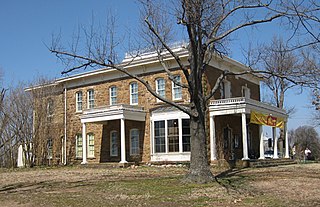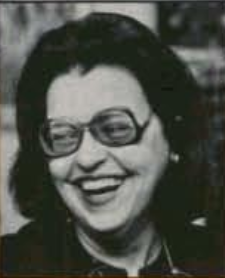Related Research Articles

The Five Civilized Tribes Museum in Muskogee, Oklahoma, showcases the art, history, and culture of the so-called "Five Civilized Tribes": the Cherokee, Chickasaw, Choctaw, Muscogee (Creek), and Seminole tribes. Housed in the historic Union Indian Agency building, the museum opened in 1966.

John Mix Stanley was an artist-explorer, an American painter of landscapes, and Native American portraits and tribal life. Born in the Finger Lakes region of New York, he started painting signs and portraits as a young man. In 1842 he traveled to the American West to paint Native American life. In 1846 he exhibited a gallery of 85 of his paintings in Cincinnati and Louisville. During the Mexican–American War, he joined Colonel Stephen Watts Kearney's expedition to California and painted accounts of the campaign, as well as aspects of the Oregon Territory.

Joan Hill, also known as Che-se-quah, was a Muscogee Creek artist of Cherokee ancestry. She was one of the most awarded Native American women artists in the 20th century.
Talmadge Davis (1962–2005) was a Cherokee artist, who explored historical and military themes in his highly naturalistic paintings.
Cecil Dick, or Degadoga (1915–1992) was a well-known Cherokee artist often referred to as "the Father of Cherokee Traditional Art".
The Bacone school or Bacone style of painting, drawing, and printmaking is a Native American intertribal "Flatstyle" art movement, primarily from the mid-20th century in Eastern Oklahoma and named for Bacone College. This art movement bridges historical, tribally-specific pictorial painting and carving practices towards an intertribal Modernist style of easel painting. This style is also influenced by the art programs of Chilocco Indian School, north of Ponca City, Oklahoma, and Haskell Indian Industrial Training Institute, in Lawrence, Kansas and features a mix of Southeastern, Prairie, and Central Plains tribes.
Gina Gray : was an Osage artist born in Pawhuska, Oklahoma, to Andrew and Margaret Gray. She was the great-granddaughter of Henry Roan Horse. She is one of the most renowned Native American contemporary artists of the past three decades, having won awards from and held exhibits at many museums and art shows throughout Indian Country.
Dana Tiger is a Muscogee artist of Seminole and Cherokee descent from Oklahoma. Her artwork focuses on portrayals of strong women. She uses art as a medium for activism and raising awareness. Tiger was inducted into the Oklahoma Women's Hall of Fame in 2001.
David Emmett Williams was a Native American painter, who was Kiowa/Tonkawa/Kiowa-Apache from Oklahoma. He studied with Dick West at Bacone College and won numerous national awards for his paintings. He painted in the Flatstyle technique that was taught at Bacone from the 1940s to the 1970s.
Doris Littrell (1929–2020) was a gallerist from central Oklahoma who promoted Native American art.
Robert Taylor is an American self-taught artist from Oklahoma whose paintings explore Native American subject matter. He uses symbolism and manipulates figures' proportions, particularly hands and feet.
Jimmie Carole Fife Stewart is a Muscogee (Creek) art educator, fashion designer, and artist. After graduating from the Chilocco Indian School and taking courses at the University of Arizona, she earned a degree from Oklahoma State University and began working as a teacher. After a six-year stint working for Fine Arts Diversified, she returned to teaching in 1979 in Washington, Oklahoma. Primarily known as a painter, using watercolor or acrylic media, Fife-Stewart has also been involved in fashion design. Her works have been shown mostly in the southwestern United States and have toured South America. Having won numerous awards for her artworks, she was designated as a Master Artist by the Five Civilized Tribes Museum in 1997.

Valjean McCarty Hessing was a Choctaw painter, who worked in the Bacone flatstyle. Throughout her career, she won 9- awards for her work and was designated a Master Artist by the Five Civilized Tribes Museum in 1976. Her artworks are in collections of the Heard Museum of Phoenix, Arizona; the Philbrook Museum of Art in Tulsa, Oklahoma; the Southern Plains Indian Museum in Anadarko, Oklahoma; and the Wheelwright Museum of the American Indian of Santa Fe, New Mexico, among others.
Jeanne Rorex-Bridges is painter and illustrator based in Oklahoma. She is a member of the Echota Cherokee Tribe of Alabama, a state-recognized tribe.
Mary Adair is a Cherokee Nation educator and painter based in Oklahoma.

Jane McCarty Mauldin was a Choctaw artist, who simultaneously worked in commercial and fine art exhibiting from 1963 through 1997. Over the course of her career, she won more than 100 awards for her works and was designated as a "Master Artist" by the Five Civilized Tribes Museum in Muskogee, Oklahoma. She has works in the permanent collections of the Heard Museum, the Heritage Center of the Red Cloud Indian School and the collections of the Department of the Interior, as well as various private collections.

Anna Mitchell was a Cherokee Nation potter who revived the historic art of Southeastern Woodlands pottery for Cherokee people in Oklahoma. Her tribe designated her as a Cherokee National Treasure and has works in numerous museum collections including the Smithsonian National Museum of the American Indian, the Museum of Fine Arts, Boston, and the Fred Jones Jr. Museum of Art, among others.
Joan Brown is an American artist, illustrator and educator. She is of Cherokee and Creek descent from Oklahoma. Her work is of the Bacone school style.
Gary Montgomery is a professional artist of Seminole descent who primarily works with oil paints. An artist since the 1970s, Montgomery has established a reputation as a skilled Native artist. His work has been included in many exhibitions at the Five Civilized Tribes Museum in Muskogee, Oklahoma and numerous galleries in Oklahoma City. The Gilcrease Museum acquired his painting “Grizzly Bear with Reflection in Water” in 2006.
Bill Glass Jr. is a Cherokee Nation ceramic artist, sculptor, and public artist, who was named a Cherokee National Treasure in 2009.
References
- ↑ "Cherokee National Treasure Bill Rabbit dies". Cherokee Phoenix. Archived from the original on 23 September 2015. Retrieved 17 August 2015.
- ↑ "In Memory of My Dad Bill Rabbit". Rabbit Studios. Retrieved 17 August 2015.
- ↑ "Bill Rabbit dead". The Times. Retrieved 17 August 2015.
- ↑ Pearson Little-Thunder, Julie (December 10, 2010). "Oral history interview with Bill Rabbit". Oklahoma Native Artists. Retrieved 23 July 2020.
- 1 2 "Bill Rabbit". Native Arts of America. Retrieved 17 August 2015.
- ↑ "2015 Bill Rabbit Legacy Art Scholarship". Cherokee Nation Foundation. Retrieved 17 August 2015.[ permanent dead link ]